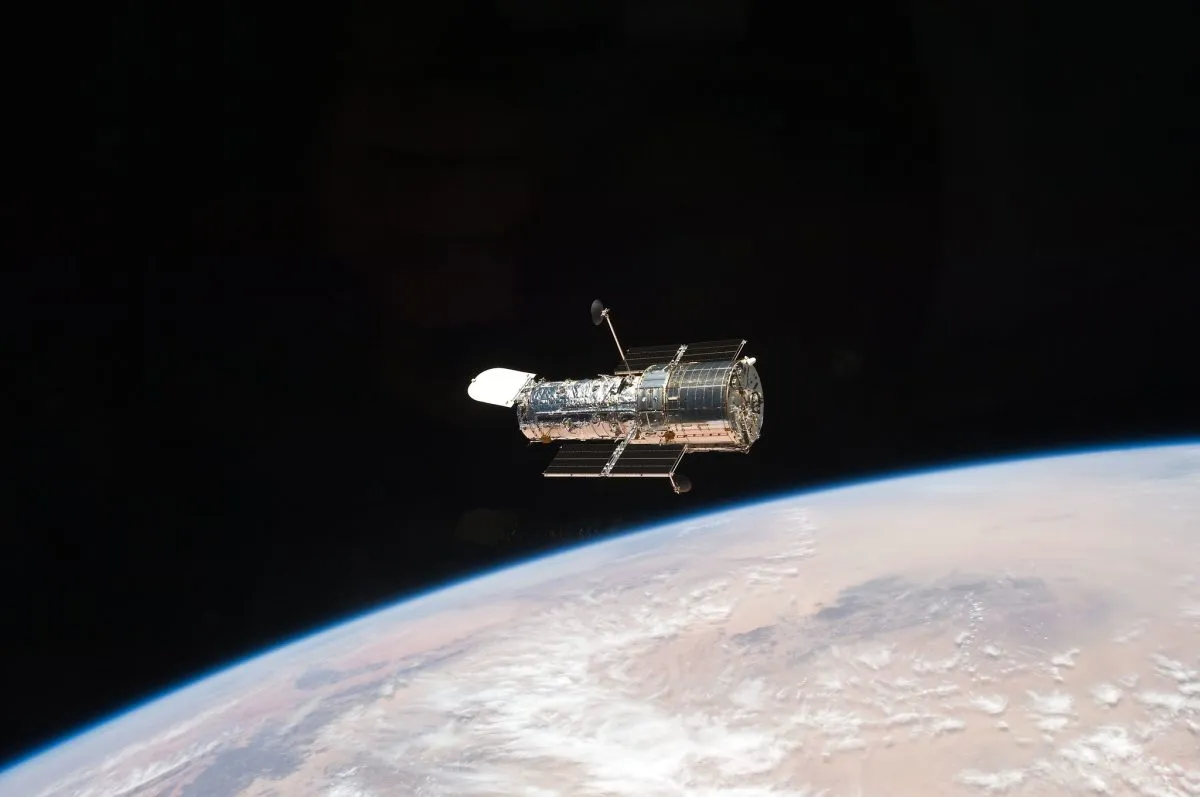Astronomer Nancy Grace Roman (16 May 1925 –25 December 2018) not only laid the groundwork for our understanding of how galaxies grow but also founded NASA’s space astronomy programme, becoming ‘the mother of Hubble’.
Roman’s love of the stars was evident from an early age, and she set up an astronomy club for her friends when she was just 10.
However, when she told her guidance counsellor she wanted to be a professional astronomer, she was asked, "What lady would take mathematics instead of Latin?"

Ignoring this discouragement, she went on to attain her degree from Swarthmore University before moving to the University of Chicago’s Yerkes Observatory for her PhD.
Here she studied the motions of stars which formed in the same cluster as the Plough, but which had drifted apart over time.
Later, Roman expanded this research to all Sun-like stars visible to the naked eye and soon noticed that where stars orbited in the Milky Way was connected to their metallicity.
Metals (meaning anything heavier than helium in astronomy) are only formed inside stars, so if a star contains a lot of metal it must have been born after several generations of previous stars had already produced them.
Younger metal-rich stars tended to move in circular orbits near our Galaxy’s centre, while older metal-poor stars were further out.
This connection was the first clue towards understanding how the Milky Way grows over time, providing the foundation for modern studies of galactic evolution.
Her work also developed a method of gauging stellar metallicities by comparing their brightness at blue and ultraviolet wavelengths, which is still used today.

Working at NASA
Despite these landmark discoveries, Yerkes Observatory refused to grant a woman a permanent position, so in 1954 Roman moved on to the Naval Research Laboratory in Washington DC to work in the emerging field of radio astronomy.
Here, she mapped out the Milky Way in new wavelengths, became head of microwave spectroscopy and consulted on the Vanguard satellite programme.
With radio astronomy still in its infancy, the instrumentation was inadequate for Roman’s needs, and she didn’t want to retrain as an electronics engineer to build her own.
So in 1959 she moved on to the National Aeronautics and Space Administration, NASA, as the head of observational astronomy, just one year after the agency had been established.
This new role effectively brought an end to her research, but with it Roman became the first woman to hold an executive office at NASA, giving her overall responsibility for the growing agency’s space-based observatories.

Initially many ground-based astronomers were stubbornly opposed to using remote satellites, but Roman worked tirelessly to convince them of the benefits of observing above Earth’s atmosphere.
Believing the best way for the US to glean these benefits was for NASA to oversee all major space observatories, Roman was initially the sole voice in deciding which projects would get funded.
Though many of her colleagues advocated for NASA to build a large space telescope, she dismissed the plans as premature, instead electing to fund a series of smaller satellite observatories.
Only in 1968, after a decade of success proved NASA’s capability, did Roman return to the idea of a bigger mission, though it took another three years of feasibility studies and funding before she could finally establish the Large Telescope Steering Group.
It would take dozens of institutions 20 years to complete the project, but the telescope launched in 1990, renamed the Hubble Space Telescope.
Although Roman was heavily involved in overseeing the mammoth project’s early years, she retired from NASA in 1979 as chief of astronomy, returning occasionally as a consultant.
She continued outreach work as part of her own lifelong mission to champion the inclusion of women in astronomy.
Her vision and many legacies, both scientific and cultural, continue to shape astronomy to this day.
Nancy Grace Roman Telescope
While she may not currently be a household name, Roman will soon be much better-known, as an infrared telescope named in her honour is set to launch in 2027.
The Nancy Grace Roman Space Telescope will have a 2.4m mirror – the same size as that of the Hubble Space Telescope – but its Wide Field Instrument will have a field of view 100 times that of Hubble’s infrared camera.
It will use this huge view to create a 3D map of galaxies, galaxy clusters and distant supernovae to measure how matter is distributed throughout the Universe.
These observations will compliment those by ESA’s Euclid mission in the quest to trace dark energy, the mysterious force that appears to be accelerating the expansion of the Universe.
The telescope will even be able to map out otherwise invisible dark matter using a method called microlensing.

When light from a distant galaxy passes another massive object, its path is bent slightly, becoming stretched and distorted.
These distortions can then be analysed to reveal how matter is distributed throughout the cosmos.
Lensing also happens when a planet passes in front of its host star, and the telescope will monitor 100 million stars in the hopes of spotting a star’s brightness fluctuating as an exoplanet passes in front.
Most excitingly, this technique should be able to reveal small rocky worlds in habitable orbits, similar to our own Earth.
This article originally appeared in the July 2023 issue of BBC Sky at Night Magazine.
